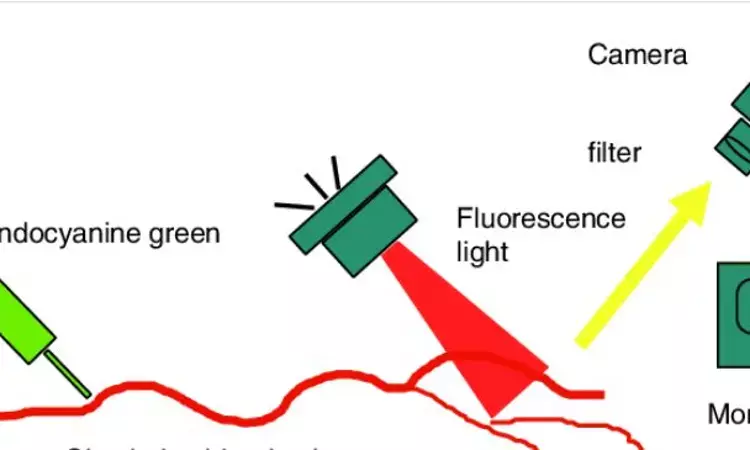- Home
- Medical news & Guidelines
- Anesthesiology
- Cardiology and CTVS
- Critical Care
- Dentistry
- Dermatology
- Diabetes and Endocrinology
- ENT
- Gastroenterology
- Medicine
- Nephrology
- Neurology
- Obstretics-Gynaecology
- Oncology
- Ophthalmology
- Orthopaedics
- Pediatrics-Neonatology
- Psychiatry
- Pulmonology
- Radiology
- Surgery
- Urology
- Laboratory Medicine
- Diet
- Nursing
- Paramedical
- Physiotherapy
- Health news
- Fact Check
- Bone Health Fact Check
- Brain Health Fact Check
- Cancer Related Fact Check
- Child Care Fact Check
- Dental and oral health fact check
- Diabetes and metabolic health fact check
- Diet and Nutrition Fact Check
- Eye and ENT Care Fact Check
- Fitness fact check
- Gut health fact check
- Heart health fact check
- Kidney health fact check
- Medical education fact check
- Men's health fact check
- Respiratory fact check
- Skin and hair care fact check
- Vaccine and Immunization fact check
- Women's health fact check
- AYUSH
- State News
- Andaman and Nicobar Islands
- Andhra Pradesh
- Arunachal Pradesh
- Assam
- Bihar
- Chandigarh
- Chattisgarh
- Dadra and Nagar Haveli
- Daman and Diu
- Delhi
- Goa
- Gujarat
- Haryana
- Himachal Pradesh
- Jammu & Kashmir
- Jharkhand
- Karnataka
- Kerala
- Ladakh
- Lakshadweep
- Madhya Pradesh
- Maharashtra
- Manipur
- Meghalaya
- Mizoram
- Nagaland
- Odisha
- Puducherry
- Punjab
- Rajasthan
- Sikkim
- Tamil Nadu
- Telangana
- Tripura
- Uttar Pradesh
- Uttrakhand
- West Bengal
- Medical Education
- Industry
Fluorescence angiography may help identify leaks after colorectal anastomosis: Study

Anastomotic leaks following colorectal anastomosis has substantial implications including increased morbidity, longer hospitalization, and reduced overall survival. The etiology of leaks includes patient factors, technical factors, and anastomotic perfusion. An intact anastomotic blood supply is especially crucial in the physiology of anastomotic healing.
The use of indocyanine green fluorescence angiography is associated with a decrease in anastomotic leakage,suggests the findings of a recent study. The authors further reported that the association is present in patients with severe anastomotic leakage requiring intervention as well as low colorectal anastomoses.The study findings have been published in Surgery.
Indocyanine green (ICG) fluorescence angiography (FA) is an emerging technology, which has been used in an attempt to decrease the incidence of anastomotic leaks. Using near-infrared image systems, vascular perfusion toward the colorectal anastomosis can be assessed intraoperatively, allowing surgeons to anastomose well-perfused bowel or to refashion a poorly perfused anastomosis.
Because anastomotic leakage afflicts about 10% of colorectal resections, randomized controlled trials and prospective studies are not readily forthcoming due to the large number of patients needed in order to achieve an adequate sample size for comparison.
For the study design, PubMed, Web of Science, Embase, and the Cochrane Library were searched to identify studies comparing the use of indocyanine green fluorescence angiography versus standard care on rates of anastomotic leakage. Data were pooled with the Mantel-Haenszel method and analyzed based on a random-effects model to estimate the pooled odds ratio and 95% confidence interval. The heterogeneity of studies was evaluated using I2 statistic.
Data analysis revealed the following facts.
· Twenty studies were included in this meta-analysis of 5,498 patients.
· The pooled estimate of the odds ratio was 0.46 (95% confidence interval 0.34–0.62; P < .00001) favoring indocyanine green fluorescence angiography.
· The overall anastomotic leak rate was 3.7% (n = 82) in the intervention group and 8.6% (n = 282) in the control group.
· Indocyanine green fluorescence angiography led to a change in the anastomotic site in 216 (9.7%) patients.
· Subgroup analyses of anastomotic leakage requiring intervention, patients requiring a low colorectal anastomosis, and prospective studies had a pooled estimate of odds ratio 0.55 (95% confidence interval 0.35–0.89), odds ratio 0.38 (95% confidence interval 0.27–0.54; P < .0001), and odds ratio 0.49 (95% confidence interval 0.30–0.81; P = .005) respectively.
"In conclusion, colorectal anastomotic leakage rates can be decreased through the use of ICG FA. This decrease in the rate of anastomotic leakage is also present when anastomotic leakage requiring radiologic or operative intervention is required and in patients with a low colorectal anastomosis."wrote the team.
For full article follow the link: https://doi.org/10.1016/j.surg.2020.08.024
Primary source:Surgery
Dr Satabdi Saha (BDS, MDS) is a practicing pediatric dentist with a keen interest in new medical researches and updates. She has completed her BDS from North Bengal Dental College ,Darjeeling. Then she went on to secure an ALL INDIA NEET PG rank and completed her MDS from the first dental college in the country – Dr R. Ahmed Dental College and Hospital. She is currently attached to The Marwari Relief Society Hospital as a consultant along with private practice of 2 years. She has published scientific papers in national and international journals. Her strong passion of sharing knowledge with the medical fraternity has motivated her to be a part of Medical Dialogues.
Dr Kamal Kant Kohli-MBBS, DTCD- a chest specialist with more than 30 years of practice and a flair for writing clinical articles, Dr Kamal Kant Kohli joined Medical Dialogues as a Chief Editor of Medical News. Besides writing articles, as an editor, he proofreads and verifies all the medical content published on Medical Dialogues including those coming from journals, studies,medical conferences,guidelines etc. Email: drkohli@medicaldialogues.in. Contact no. 011-43720751


